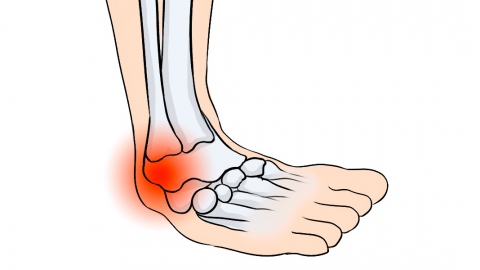How to quickly reduce swelling and relieve pain from a sprained ankle
Generally speaking, there is no single fastest way to reduce swelling and relieve pain after a foot sprain. Measures such as immobilization and rest, alternating cold and hot compresses, compression bandaging, medication, and rehabilitation exercises can help alleviate swelling and pain. The specific approaches are as follows:

1. Immobilization and Rest
Immediately after a foot sprain, stop all activity, sit or lie down, and elevate the affected limb to reduce blood and fluid accumulation in the injured area, thereby alleviating swelling and pain. For the first 48-72 hours after the injury, avoid walking or bearing weight. If necessary, use an elastic bandage or ankle brace to immobilize the joint and prevent further injury.
2. Alternating Cold and Hot Compresses
Apply cold compresses within the first 48 hours after injury. Wrap an ice pack or a cold, wet towel in a towel and apply it to the affected area. This constricts blood vessels, reduces bleeding and exudation, and helps alleviate swelling and pain. After 48 hours, switch to hot compresses using a hot water bag or warm towel on the affected area to promote local blood circulation and accelerate the absorption of bruising and inflammation.
3. Compression Bandaging
At the same time as applying cold compresses, wrap the foot with an elastic bandage from the toes toward the ankle, applying moderate pressure. This external pressure helps reduce local bleeding and swelling and provides support for the injured ligaments, relieving pain. If numbness or discoloration (purple appearance) of the toes occurs after bandaging, loosen the bandage promptly and adjust its tightness.
4. Medication
During the acute phase, topical medications such as Yunnan Baiyao Spray or Diclofenac Diethylamine Gel (Voltaren Emulgel) may be used as directed by a physician to relieve pain by inhibiting the inflammatory response. If pain is significant, non-steroidal anti-inflammatory drugs (NSAIDs) such as ibuprofen sustained-release capsules or celecoxib capsules may be taken orally under medical guidance. These medications provide both analgesic and anti-inflammatory effects, but should not be taken on an empty stomach.
5. Rehabilitation Exercises
After 72 hours post-injury, when the pain has subsided, simple rehabilitation exercises such as slowly moving the ankle or doing toe raises can be performed to promote blood circulation and ligament recovery. However, strenuous exercise should be avoided. Additionally, gentle massage of the surrounding muscles can improve local blood flow and accelerate swelling reduction.
If severe pain, inability to walk, deformity, or continuously worsening swelling occurs after the sprain, seek medical attention promptly to rule out fractures or ligament tears and avoid delaying treatment.





